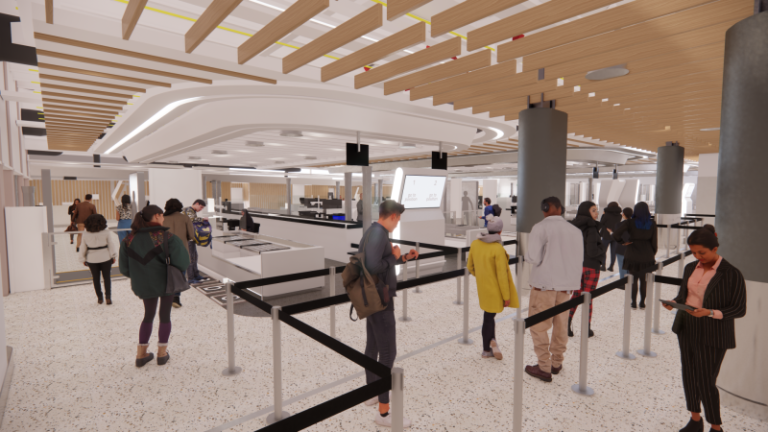The UK’s East Midlands Airport (EMA) has announced an investment program of more than £120m (US$153m) to improve all aspects of the passenger experience over the next five years.
Following an intensive period of planning and design, work is now underway on the transformation to refresh the airport infrastructure, maintain safety and regulatory standards and help it operate more efficiently.
The investment program will include the expansion of the security hall to enable the installation of next-generation scanning equipment. Works have started on the extension of the security hall, following planning approval from North West Leicestershire district council. Internal improvements will include enhancements to the entrance portal to improve access into the main security area, as well as enhancements to the facility to improve its look and feel. This will mean that new body and baggage scanning technology can be installed to enable passengers to pass through security checks without the need to separate electronic devices from baggage.
Also underway are improvements to the main customer toilets in the Departure Lounge, next to the Castle Rock bar. This will involve replacing and upgrading the facilities to a modern standard with new fixtures and fittings. Further upgrades to customer toilets will follow. The airport hopes that later phases of the investment program will see the new look and feel in the security hall carried through into the Departure Lounge, where new and additional customer seating will be installed. All this will complement an extensive refurbishment of the bar area that Castle Rock is carrying out.
EMA is also exploring a range of options for improving the Rapid Drop-Off area which will help to improve the flow of vehicles through the site, which could include installing cashless and barrierless operating systems.
In addition, work has begun to upgrade the terminal roof which due to the age of the building is in need of remedial work. The first phase will focus on the roof above the Departure Lounge area which during heavy rainfall can suffer from leaks.
Reconstruction and resurfacing of the taxiways will also be carried out. The size and number of aircraft using EMA has increased and this drives the need to invest in renewing and reconstructing some of the most heavily trafficked areas to better accommodate modern aircraft. This work will be carried out through carefully managed programs of closures including overnight and at weekends and in consultation with airlines so disruption is minimized.
Air traffic control equipment will also be upgraded to help futureproof the airport’s capabilities. This will include new radar systems, navigational aids, IT and software and airfield technical equipment.
Another significant part of the program is upgrading facilities and infrastructure such as electricity sub-stations around the site and surface water and drainage systems to maintain compliance and support the future growth of the airport.
Steve Griffiths, EMA’s managing director, said, “This is the start of a very exciting period for the airport. Our passenger numbers are almost back to pre-Covid levels and our already significant air cargo operation has capacity to expand, along with the potential for growth and investment that the East Midlands Freeport brings.”

